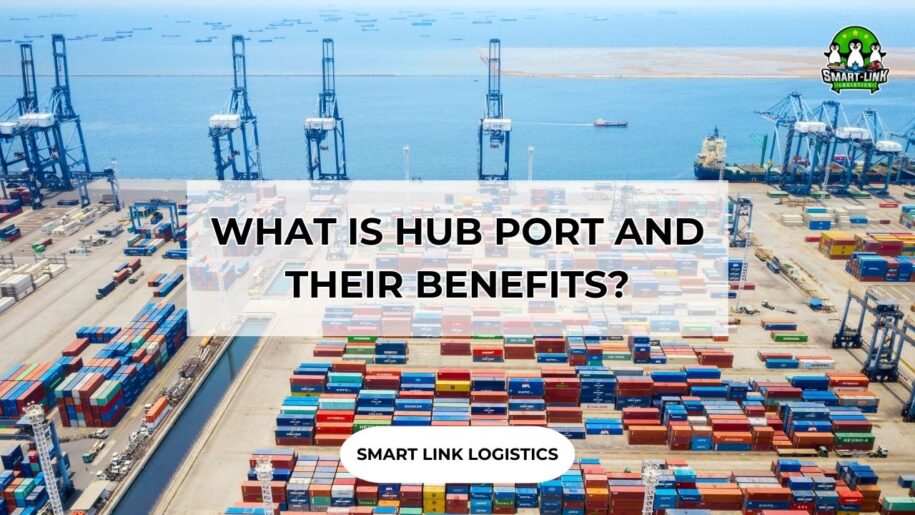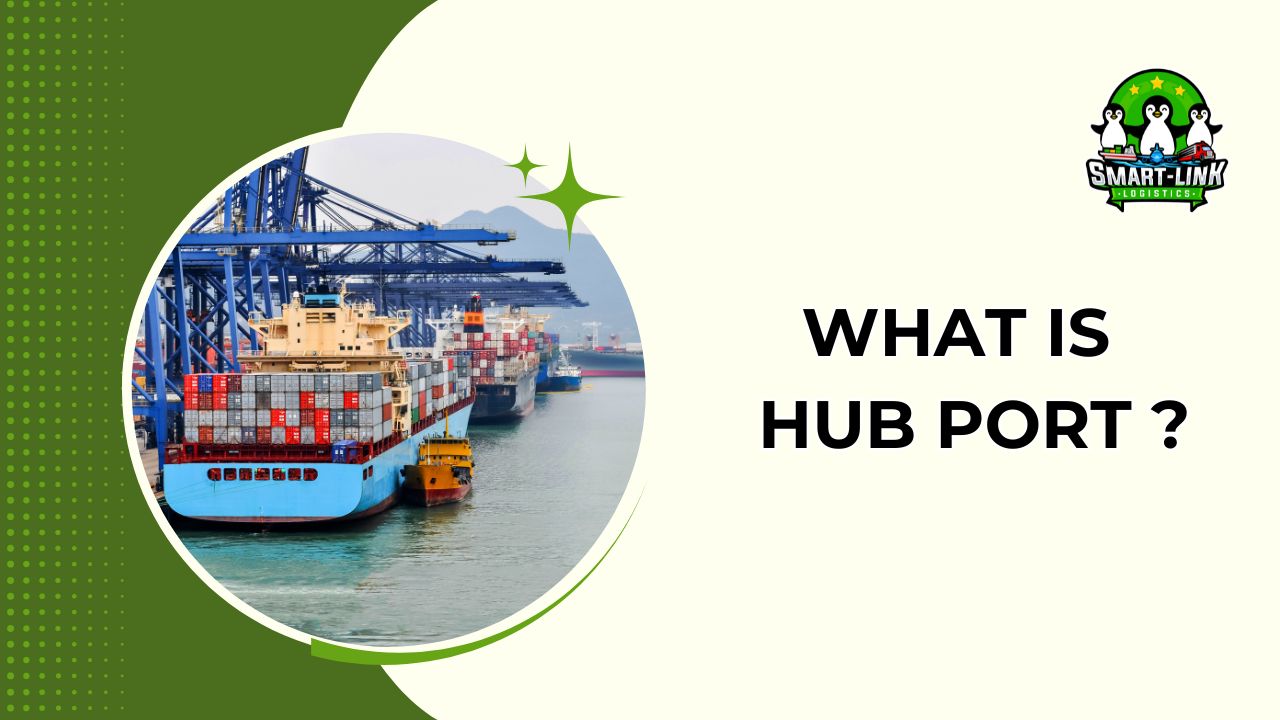
WHAT IS HUB PORT AND THEIR BENEFITS?
A Hub Port, also known as a “hub port,” is a central location that receives goods from hundreds of smaller feeder ports in the region, optimizing the transportation system, and saving time and storage costs. Let’s explore what a hub port is and the benefits it brings with SmartLink.
1. What is a Hub Port?
A Hub Port is a large-scale facility that includes a system of wharves, shore cranes, and logistics storage areas. It serves as a central hub for goods transshipment and connects domestic transport systems with feeder ships. The wharves in a Hub Port can accommodate mother ships (with a capacity of 80,000 – 100,000 DWT and over 8,000 TEU) to load and unload goods and transport them to other continents. These wharves have technical specifications, with a length of about 400 meters, a water depth of more than 14 meters, and shore cranes with a lifting capacity of over 40 tons and a reach of more than 40 meters.

2. Basic criteria for building a Hub Port
Location:
The Hub Port is situated along the main sea routes and is surrounded by many industrial zones. Additionally, the port must have a water depth of over 14 meters to accommodate mother ships with a capacity of 100,000 DWT.
Capacity:
The port is equipped with modern equipment and an information management system to optimize operations and manage cargo information.
Free Trade Area:
Creating free trade zones to attract goods from neighboring countries to the Hub Port, thus shortening transit times and increasing the turnover of goods.
Port Costs:
Port fees and handling service charges must be attractive, transparent, and specific.
Auxiliary Services:
Providing telecommunications services, ship repairs, water supply, fuel, and crew members. Customs support throughout the port’s operation.
3. What are the benefits of a Hub Port?
- Reducing complexities in transport planning and transactions between ports, facilitating more efficient feeder operations.
- Leveraging economies of scale to optimize the size of transport ships and minimize vessel space wastage.
- Shortening the turnover time of goods and storage time by maximizing port utilization.
Currently, some of the world’s leading Hub Ports include Singapore, Hong Kong, Shanghai, Long Beach, and Rotterdam.
The above information provides a detailed explanation of what a Hub Port is. We hope that the information provided by SmartLink will help readers understand the basics. If you are looking to collaborate with an entity that can support certifications and documents related to logistics and import-export, Smart Link Logistics is a great choice to consider.
Hotline: + 84 903 354 157 to know more about our services

If you require assistance with international import and export of goods, please contact our team at Smartlink Logistics. We are available to provide you with professional guidance on our services and the necessary customs procedures.
SMART LINK: BEST SERVICE BEST YOU


































